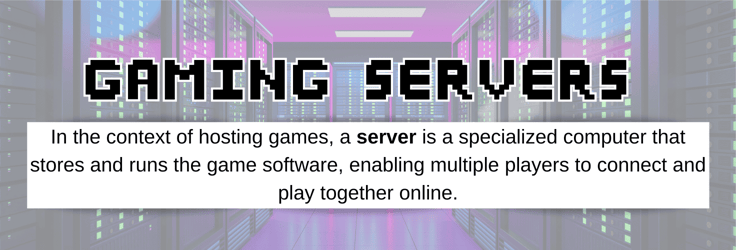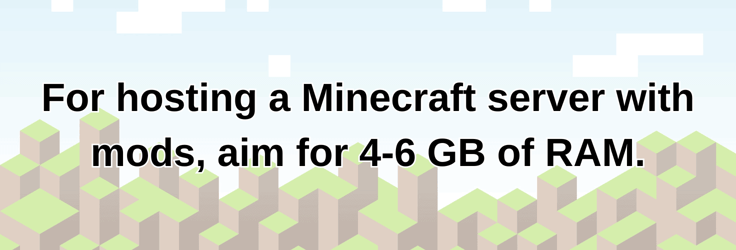
Creating modifications — or “mods” as commonly referred to in the Minecraft community — can make this game more entertaining. Minecraft holds the record of the best-selling video game of all time, with more than 280 million copies already sold.
That also explains why some web hosting providers offer hosting environments tailored to the unique needs of Minecraft players. Rather than hosting this game on your personal computer and being one coffee spill away from disaster, the option to host Minecraft on a server allows you to explore different mods, add more players to your environment, and take your creativity to a whole new level.
While many premium Minecraft hosts are out there, our focus today is on free modded Minecraft server hosts. Let’s explore some of the best.
1. ScalaCube
ScalaCube is one of the best Minecraft server hosting providers on the market. Although it is a premium Minecraft host, it also comes with a free hosting plan that supports mods. With the free plan, you’ll get up to 6GB of memory, your choice of server, and support for more than 1,000 modpacks.

More about ScalaCube:
- Allows only one game server
- Provides DDoS protection
- Gives you at least 30GB of SSD storage
- Offers instant setup for your Minecraft mod server
If you need multiple game servers, more RAM and storage, and unlimited player slots, we recommend upgrading to a Minecraft hosting pro plan. Its monthly charge is as little as the price of a candy bar.
2. Falix
Falix is quite generous for a free Minecraft server. You don’t usually get 8GB of memory and 20 GB of disk space for free, but that’s what the host offers.

More about Falix:
- Has an easy-to-use control panel (very beginner-friendly)
- Allows you to share your server access with other admins
- Supports unlimited plugins and mods
- Gives you full access to your server
Falix’s generosity doesn’t stop there; it also throws in a free MySQL database for your Minecraft server. Falix is not a bad choice considering its zero-dollar price tag. It has plenty of perks for Minecraft players seeking to enhance gameplay with mods.
3. Minefort
Minefort offers free Minecraft hosting with no credit card required. But, as you’d expect, the free plan has many restrictions. For example, you’ll only receive 1GB of RAM and can host no more than 20 players.

More about Minefort:
- Lets you install unlimited plugins
- Supports a plethora of Minecraft mods
- Comes with a user-friendly console — ideal for beginners
- Offers a well-documented knowledge base for reference
The free plan is good enough to get you started, but you should lower your expectations of its performance. For context, Minecraft works best with at least 2GB of memory, but Minefort’s free plan only offers 1GB. Fortunately, you can always upgrade your plan with one click.
4. Aternos
If Scalacube Minecraft hosting isn’t what you are looking for, you should check out Aternos, another free modded Minecraft server host. It promises to stay free forever, offering peace of mind to anyone looking for free Minecraft server hosting long-term.

More about Aternos:
- Supports tons of Minecraft mods and plugins
- Protects its servers against DDoS attacks
- Offers fully-customizable servers
- Creates automatic backups and restore points
Aternos is quite decent and generous as far as Minecraft server hosting is concerned.
But it isn’t the place to look for perfection. This Reddit thread highlights key issues about the Minecraft hosting provider, including constant lagging and restricted mods (you can’t upload your own mods or use more than one modpack at a time).
5. Free MC Server
Free MC Server will bombard you with ads, but that’s the price you pay for free Minecraft hosting. It’s not the most powerful server out there, but it gets the job done, especially if you’re not in a hurry to play.

More about Free MC Server:
- Gives you up to 1.5GB of RAM and 10GB of storage for free
- Includes free DDoS protection
- Offers regular backups
- Supports Minecraft mods and plugins
On the downside, you’ll likely have to queue to get a server ready. But you can skip the queue by upgrading to a premium plan, which costs just a few cents a day and has a pay-as-you-go pricing model.
6. MagmaNode
MagmaNode will welcome you with ads because that’s how it pays for its free Minecraft hosting. This host doesn’t say a lot about what it offers, but here are some key things to know.

More about MagmaNode:
- Allows you to upload your own Minecraft world rather than starting from scratch
- Uses AMD Ryzen processors for better performance
- Supports whitelisting, allowing you to decide who can enter your server and who can’t
- Offers server optimization support if you need it
MagmaNode is a free Minecraft gaming server that says little but does a lot. A 100% uptime guarantee, for example, isn’t something you’d expect from a free Minecraft host, but that’s what you get here.
7. Server.pro
Server.pro is a game server provider that specializes in tons of different simulation, sandbox, and roleplaying games (RPGs), including Minecraft, Stardew Valley, and even Grand Theft Auto. The best part is you can sign up for your free server in four simple steps.

More about Server.pro:
- Global datacenters in the US, Europe, Asia, and Australia for greater ping time
- Easily edit your files with syntax highlighting so you can make changes and get back to gaming faster
- Install Bukkit and Spigot plugins with a simple one-click installer
- Alongside custom configuration, you can also resize if you need more disk space, memory, or CPU
Server.pro’s free plan is a little lacking when it comes to storage options. For $0/mo, you get 2 vCores and 1 GB, but you can find solace in the fact that Server.pro has 5 GB NVMe speeds, up to 10 players, and up to 10 plugins and mods for its base plan. It’s not the best, but all in all, not a bad deal either.
8. Minehut
Minehut supports different server categories and mods for Minecraft. I find it to be particularly well-equipped, especially for a free Minecraft host.

More about Minehut:
- Has servers in the US, Brazil, and the United Kingdom
- Comes with tons of resources for Minecraft players
- Sets up your server almost immediately
As with any other free Minecraft host, Minehut isn’t without complications. We’ve seen numerous complaints about this host.
One Reddit user wasn’t too happy when they learned that they could not migrate their Minecraft server elsewhere without paying Minehut. I understand their frustration, given that the likes of Apex Hosting offer free migration. Others have complained that the Minehut lobby tends to break down unexpectedly.
What Is Modding in Minecraft?
Modding in Minecraft is the short form for modification. It’s when you fine-tune the game by adding, altering, or removing elements using third-party software and user-created modifications.

With mods, you can make changes and improvements to the Minecraft gaming experience, expanding the game’s capabilities far beyond the traditional version. And since Minecraft is all about creativity and innovation, modding fits right in.
How Can I Host a Modded Minecraft Server?
You have many different options to go about this. Gaming servers are dedicated computers that host and run games. You can choose a free hosting provider like the ones I’ve suggested above, but that option has its limitations.

For starters, free Minecraft hosts often have many restrictions, which goes against the whole logic of playing the game in the first place. You deserve the freedom to build your own world without interruptions or restrictions, but very few hosts can guarantee that.
A premium host, on the other hand, offers more freedom and resources to host your Minecraft servers and install as many mods and plugins as you’d like. If you’re leaning toward premium Minecraft hosts and are unsure where to start, here’s a quick guide to get you started.
How Much RAM Does a Modded Minecraft Server Need?
At least 2GB of RAM should be good enough to get you started. But you shouldn’t expect to achieve much with that, especially if you have more than five players on your server.

To be safe, aim for around 4-6 GBs, particularly if you plan on hosting Minecraft for more than 10 players on your modded server. The more players you have, the more resources, including memory, you’ll need. But this should give you a rough idea of where to start.
Build Your Minecraft World With a Free Minecraft Server
A free Minecraft server can be a great place to start if you’re on a budget and still want to enjoy the game online with friends. But you should lower your expectations a little; a free server will likely have some limitations, including restrictions on the number of mods you can install.
As you’ve seen, some won’t even let you upload your own mods.
If you can, find an affordable premium host to unlock features, including dedicated servers (and your choice of server location), a dedicated IP address, reliable customer support, unlimited slots, offsite backups (as Hostinger Minecraft does), and many others.
If that sounds good, you can explore more options here.
Other Minecraft hosts worth checking out include GG Server (supports Minecraft Java edition) Sparked Host (incredibly affordable), and Bisect Hosting (supports Minecraft Bedrock edition).
HostingAdvice.com is a free online resource that offers valuable content and comparison services to users. To keep this resource 100% free, we receive compensation from many of the offers listed on the site. Along with key review factors, this compensation may impact how and where products appear across the site (including, for example, the order in which they appear). HostingAdvice.com does not include the entire universe of available offers. Editorial opinions expressed on the site are strictly our own and are not provided, endorsed, or approved by advertisers.
Our site is committed to publishing independent, accurate content guided by strict editorial guidelines. Before articles and reviews are published on our site, they undergo a thorough review process performed by a team of independent editors and subject-matter experts to ensure the content’s accuracy, timeliness, and impartiality. Our editorial team is separate and independent of our site’s advertisers, and the opinions they express on our site are their own. To read more about our team members and their editorial backgrounds, please visit our site’s About page.








